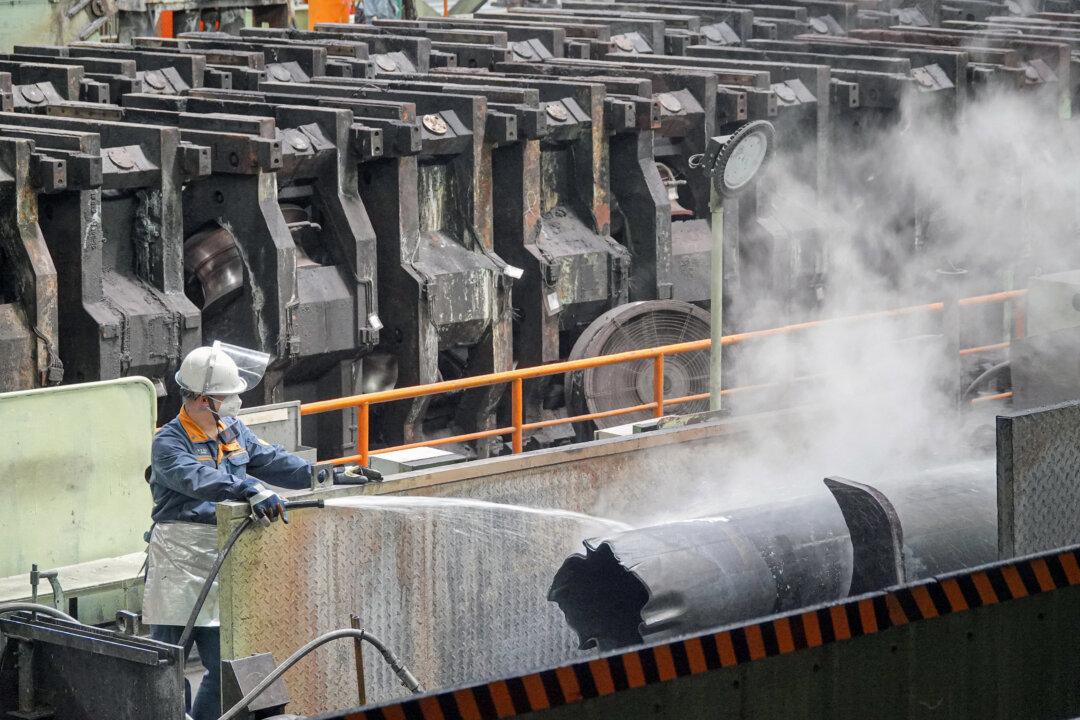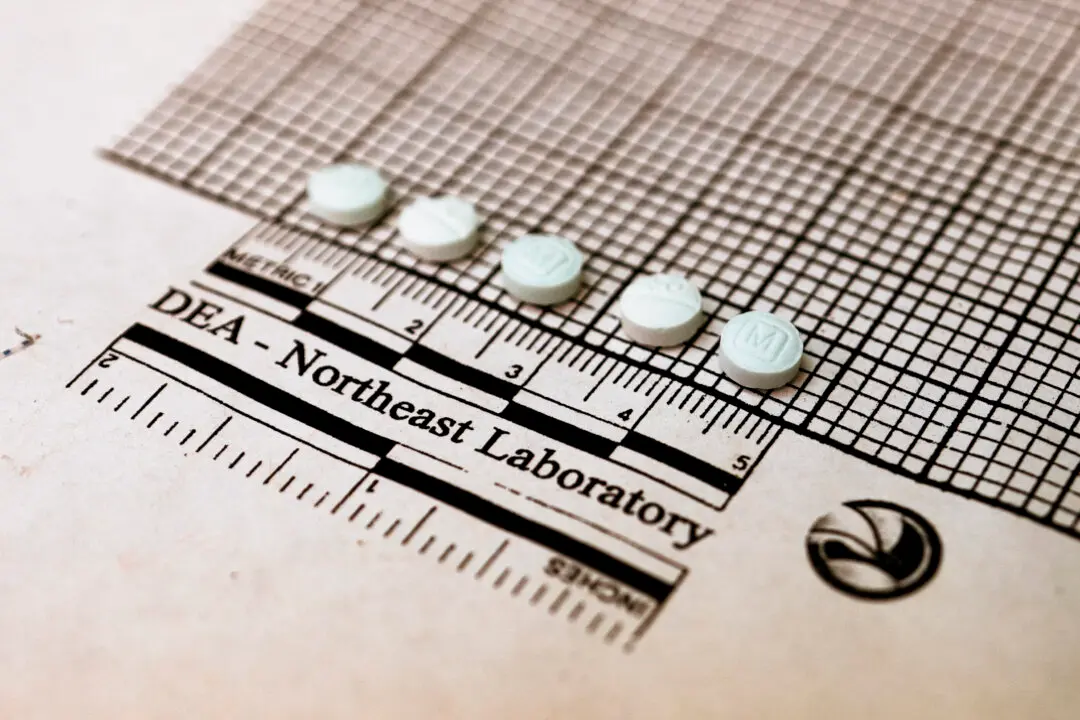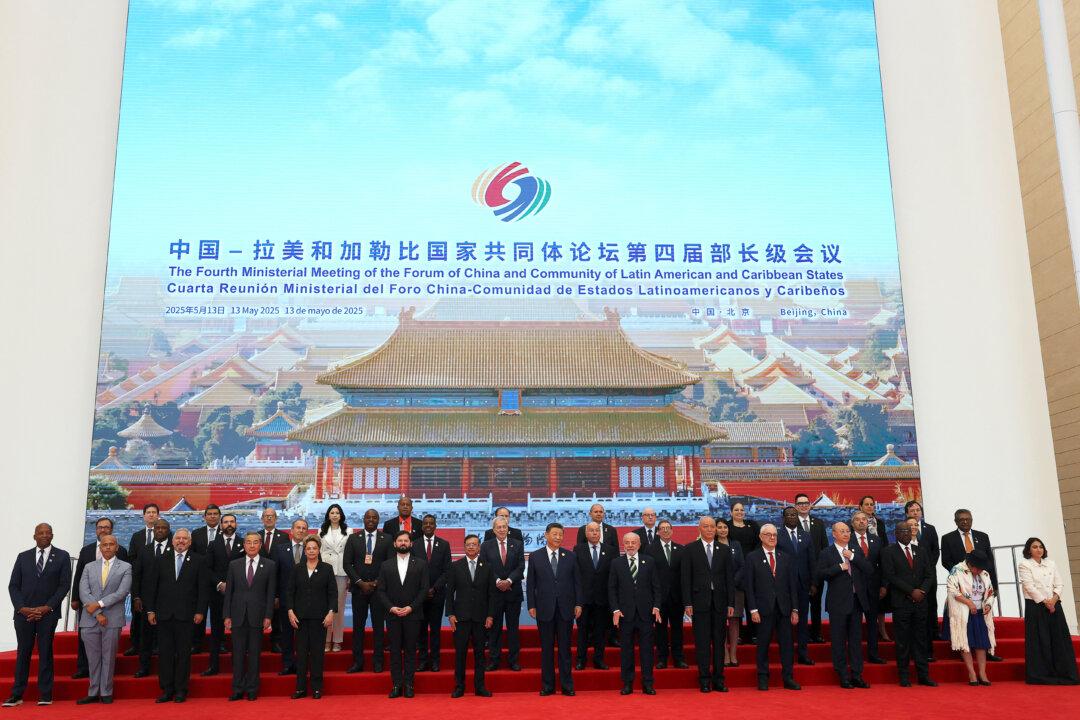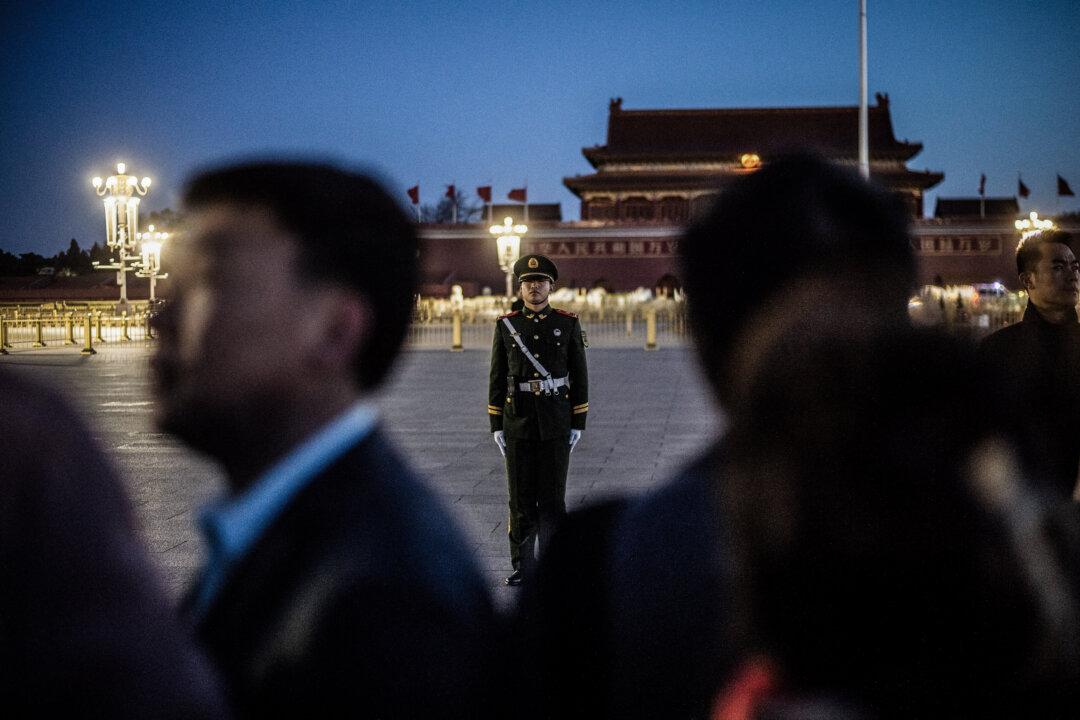April economic data released by the Chinese communist regime showed that China’s economy slowed month over month in nearly all sectors.
Analysts, who caution that official statistics should be treated with skepticism, said the Chinese economy may experience a short-term, mild rebound following the 90-day tariff truce between the United States and China but that it will likely worsen afterward because of the prospect of a trade war.
According to data published by China’s National Bureau of Statistics on May 19, the total value of retail sales of consumer goods in April was 3.72 trillion yuan ($516.1 billion), a year-on-year increase of 5.1 percent. This was less growth than the 5.9 percent increase in March.
Industrial added value grew by 6.1 percent year on year, slower than the 7.7 percent growth in March.
Real estate investment fell by 10.3 percent year on year in April, and commercial housing sales fell by 2.8 percent year on year. The number of newly started buildings, calculated by floor area, fell by 23.8 percent.
Fixed asset investment in the four months from January to April grew by 4 percent year on year, lower than the 4.2 percent forecast by Reuters.
China’s crude oil processing capacity was 14.12 million barrels per day in April, down by 4.9 percent from the previous month and 1.4 percent from the previous year. Crude steel production fell by 7 percent from March.
U.S.-based economist Davy J. Wong told The Epoch Times on May 20 that the published figures fall within the usual margin of error of China’s official statistics, “typically conservative but not outright fabricated.”
“This is a genuine portrait of slowing momentum and structural drag, indicating that the economy is clearly under downward pressure,” he said.
Wong said the 6.1 percent growth in China’s industrial added value was driven by new energy and high-end manufacturing promoted by the state, but he noted that it was still down from 7.7 percent in March.
Other international analysts pointed out that China’s industrial production data for April are a result of “‘frontloaded’ fiscal support,” referring to stronger government spending. Also, the government stimulus failed to spur domestic demand.
U.S.-based China affairs observer Wang He told The Epoch Times: “Because the overall trend of the country’s economy has been very bad in recent years, since last September, the Chinese regime introduced some stimulus policies, which had some impact on these economic data.
“However, the effect has been declining, and coupled with the U.S.–China tariff war, the economic data for April don’t look so good.”
Commodities such as crude oil have a direct and sensitive relationship with the state of China’s economy, Wang noted.
“When the Chinese economy is in a downturn, the prices of China’s major international commodities fall,“ he said. ”The tariff war between China and the United States and the trend of China’s own economic situation both have had a significant impact on the prices of these commodities.”
Wang also said that “there is a difference between the data the Chinese regime discloses to the public and its internal data, and the internal data should be worse.”
China’s manufacturing purchasing managers’ index (PMI) for April was 49, indicating a contraction in the manufacturing sector. A PMI reading above 50 indicates expansion in manufacturing activity, while a reading below 50 indicates contraction.
Despite the all-around slowdown shown in the official April data, the ruling Chinese Communist Party (CCP) claimed that China’s economy showed “strong resilience.”
The Chinese economy was already in a precarious situation, and the tariffs dispute with the United States has made the situation even worse, Wang said.
“So the ‘resilience’ of the Chinese economy is just official propaganda and a way to brainwash Chinese people,” he said.
Wang said that it is “impossible for the CCP to use such an economic situation to sustain a long-term tariff war with the United States.”
Wong said that “there is some resilience as the official data show, but it’s not enough to mask the broader slowdown.”
“High-tech manufacturing sectors, like [electric vehicles] and solar, continue to grow, but their impact on total [gross domestic product] remains limited,” he said. “Weak domestic demand, real estate drag, and high youth unemployment represent three systemic risk factors, which cannot be fixed by exports or short-term stimulus alone.”

Temporary Mild Rebound Followed by Uncertainty
Analysts said that in the short term, China’s economy may rebound mildly as U.S. importers rush to bring in goods from China before the 90-day tariff suspension expires, but they said that the medium-term outlook remains pessimistic.Wang said China’s economic data in May will appear better “because there is a lot of uncertainty.”
“This will lead to more overseas orders as the U.S. exporters seek replenishment or stockpiling of goods from China,” he said. “So this factor will make China’s economic indicators look better in May and June.”
Overall, he said, the economic data for the second quarter (April to June) should be worse than those for the first quarter (January to March).
As for the longer term, Wang said that the three-month truce in the tariff dispute will end in the third quarter, and “the final outcome of the China–U.S. tariff negotiations will affect China’s economy later this year.”
“We can only wait to see,” he told The Epoch Times.
Wong made a similar assessment, predicting that there may be a short-term boost in May and June but that the remaining fundamental issues will affect the Chinese economy.
“The 90-day suspension of U.S.–China tariffs could lead to a temporary rebound in export orders and modest improvement in trade,” Wong said.
“But three key issues remain unresolved: domestic demand remains weak, and consumer confidence is low; the real estate credit chain continues to deteriorate, with mounting local government debt; and there’s a structural mismatch in youth and white-collar employment, distorting long-term demand.”




